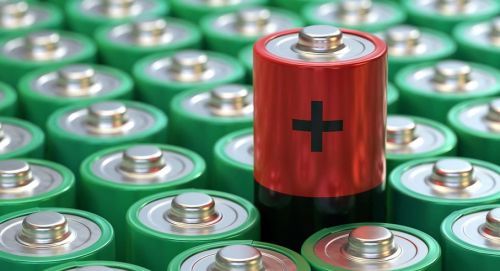
16/09/2021
Battery technology in the Barcelona Synchrotron Park environment
Battery technology in the Barcelona Synchrotron Park environment
Last July, in the framework of electric mobility, one of the current challenges for our society, the Spanish government approved the Strategic Project for the Recovery and Economic Transformation of the Electric and Connected Vehicle, a comprehensive initiative that aims to provide the industrial fabric with all the capabilities and infrastructure needed for the development of the electric car.
In this context, within the Barcelona Synchrotron Park environment, top-level entities are working to promote the research and development of this technology: increasing its performance and sustainability, identifying new chemical molecules beyond lithium ions, etc.
First of all, let’s mention two research institutes located on the campus of our partner and neighbor the Autonomous University of Barcelona, leaders in materials science and among the world centers involved in this field of research: the Institute of Materials Science of Barcelona (ICMAB) and the Catalan Institute of Nanoscience and Nanotechnology (ICN2).
Secondly, let’s highlight the Eurecat technology centre with one of its locations next to our Park. This year, Eurecat has created, together with the Catalonia Institute for Energy Research (IREC), the reference centre on batteries of southern Europe Battech, which will focus its activities on R&D projects. It will cover the cell and battery design, materials, testing and validation, industrialization, second life and circularity stages to generate and transfer knowledge to industry.
Finally, we should mention the Alba Synchrotron, the icon of our park and a facility for cutting-edge research and technological development, which plays a key role in the field of batteries: it allows the characterization and development of new materials, for example for anodes and cathodes, or the analysis of their in-situ behaviour in the charging and discharging processes.
In this context, within the Barcelona Synchrotron Park environment, top-level entities are working to promote the research and development of this technology: increasing its performance and sustainability, identifying new chemical molecules beyond lithium ions, etc.
First of all, let’s mention two research institutes located on the campus of our partner and neighbor the Autonomous University of Barcelona, leaders in materials science and among the world centers involved in this field of research: the Institute of Materials Science of Barcelona (ICMAB) and the Catalan Institute of Nanoscience and Nanotechnology (ICN2).
Secondly, let’s highlight the Eurecat technology centre with one of its locations next to our Park. This year, Eurecat has created, together with the Catalonia Institute for Energy Research (IREC), the reference centre on batteries of southern Europe Battech, which will focus its activities on R&D projects. It will cover the cell and battery design, materials, testing and validation, industrialization, second life and circularity stages to generate and transfer knowledge to industry.
Finally, we should mention the Alba Synchrotron, the icon of our park and a facility for cutting-edge research and technological development, which plays a key role in the field of batteries: it allows the characterization and development of new materials, for example for anodes and cathodes, or the analysis of their in-situ behaviour in the charging and discharging processes.
More news
28/01/2021
Institutional visit to the Elena Renewable Gas Plant in Parc de l'Alba
12/01/2021
2021: the Alba synchrotron begins its mutation
30/12/2020
The Park has a new Urban Development Master Plan
29/11/2020
The director of Parc de l'Alba, Pere Solà, academic director of the new Postgraduate Course in Urban Planning and Health at the UPC School
18/11/2020
Catalan minister Ramon Tremosa visits the ALBA synchrotron and announces the creation of a public-private investment fund to improve knowledge transfer
03/11/2020
Catalonia, at the forefront of Europe in life sciences and health; the Alba synchrotron contributes to this leadership









